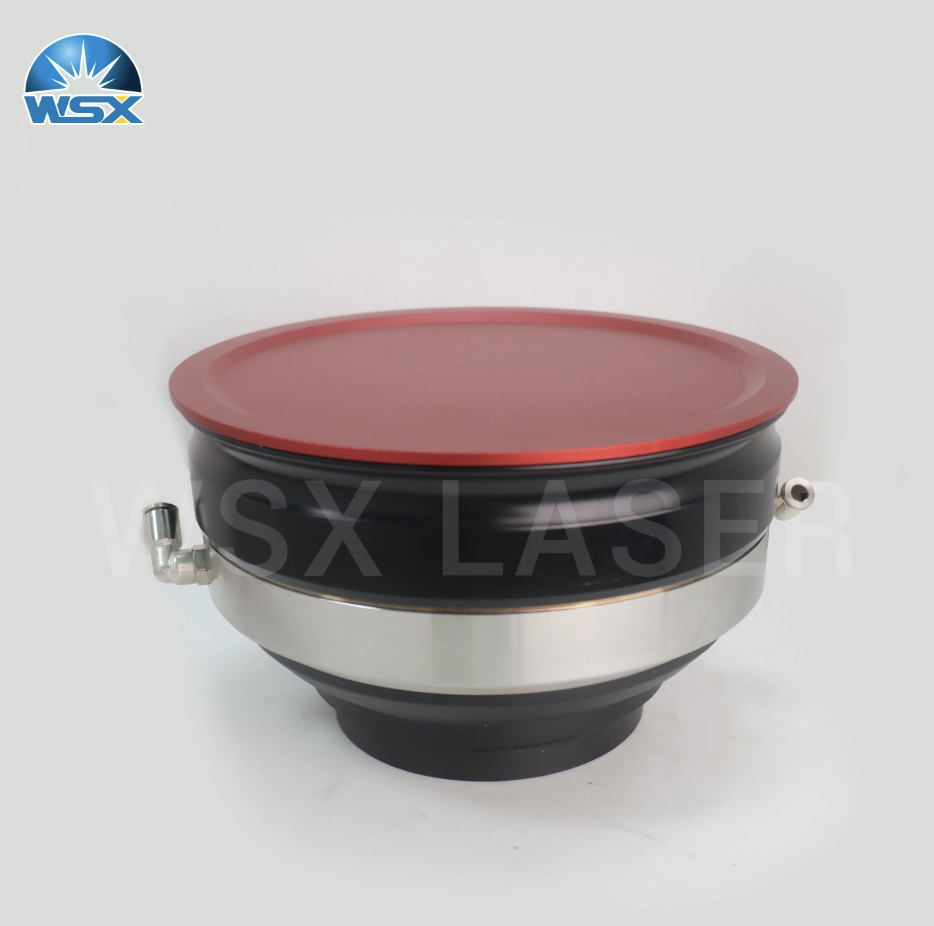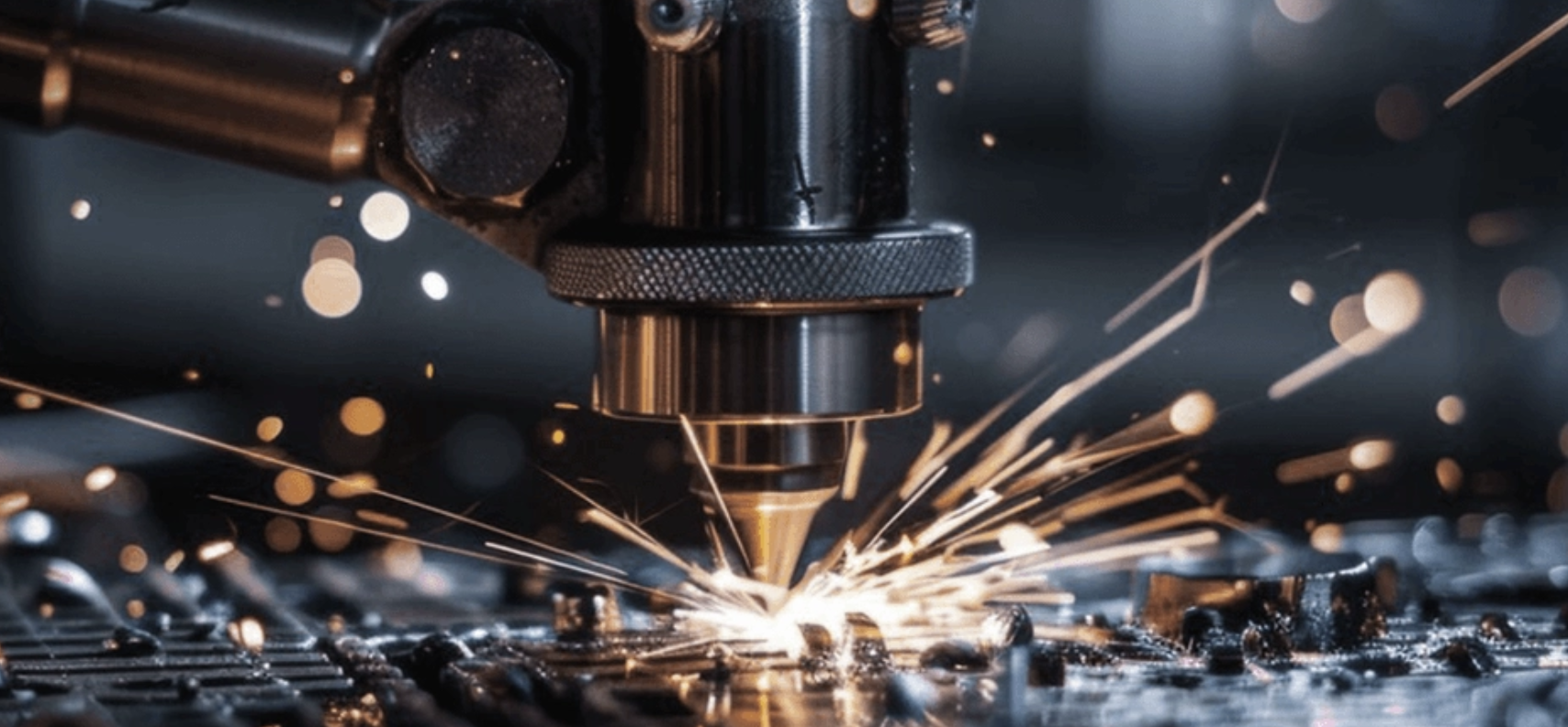Laser technology powers modern industry. From marking, engraving, and cutting to 3D printing, lasers make processes faster, cleaner, and more precise. At the heart of these systems lies a small but essential component: the F-Theta lens. It may seem simple, but it determines whether a laser beam hits exactly where it should, at the right focus, with consistent intensity.
This guide explains what an F-Theta lens does, how it works, why it’s critical, and how it shapes industries from semiconductor fabrication to automotive manufacturing.
Understanding F-Theta Lenses
What Is an F-Theta Lens?
An F-Theta lens is a special optical lens designed for laser scanning systems. Unlike a standard lens, which focuses light on a curved surface, an F-Theta lens produces a flat focal plane, making it ideal for laser processing over wide areas.
Also called a scan lens or flat-field objective, it ensures the position of the laser spot is directly proportional to the scan angle (theta). This proportionality is critical for precise and uniform marking, cutting, and engraving.
The lens assembly typically contains three to four pre-aligned elements, carefully mounted in robust housing. These lenses often include anti-reflective coatings to reduce light loss and prevent back reflections, which can damage sensitive optics or materials.
How F-Theta Lenses Work
F-Theta lenses are placed after the scan head in a laser system. The scan head contains mirrors (usually galvanometers) that move the laser beam rapidly in X and Y directions. The F-Theta lens ensures that as the beam moves, it focuses accurately across the flat work surface.
Key effects:
Maintains constant spot size across the entire scan field.
Reduces optical distortions, including pincushion or barrel effects.
Preserves energy density, ensuring the laser works efficiently and consistently.
This makes F-Theta lenses essential in applications where micron-level precision matters. Without them, even high-quality lasers can produce irregular marks or cuts at the edges of the scan area.
F-Theta Lens vs. Standard Lens
| Feature | Standard Lens | F-Theta Lens |
| Focus surface | Curved (spherical) | Flat (plane) |
| Spot uniformity | Changes with field | Almost constant |
| Distortion | High at edges | Minimal |
| Angle-to-position | Non-linear | Linear |
Unlike ordinary lenses, F-Theta lenses eliminate non-linear errors, enabling precise laser processing across large areas. The linear relationship between scan angle and focal position is what makes them reliable for industrial and research applications.

Key Components and Features
Lens Elements and Materials
F-Theta lenses are made from fused silica or low-expansion optical glass, materials chosen for their thermal stability and low absorption.
Benefits:
Resist high-power laser damage
Minimize thermal distortion during long runs
Reduce reflection losses through low-absorption coatings
Special designs prevent internal ghosts, where light reflects inside the lens. Ghosts can damage surfaces or reduce marking accuracy, especially in ultra-short-pulse (USP) lasers.
Important Parameters
Designing an F-Theta lens requires careful attention to key parameters:
Operating wavelength: Lenses must match the laser wavelength (UV, visible, IR) for optimal focus.
Spot size: Smaller spots improve detail but increase energy density.
Scan field diameter (SFD): Area the lens can cover accurately.
Output scan angle (OSA): Angle at which laser exits the lens. Telecentric lenses keep OSA at zero.
Working distance: Distance from lens housing to focal plane.
Telecentricity: Ensures beams meet the target perpendicular, reducing angular errors.
Proper attention ensures uniform energy delivery and maintains accuracy across the entire working area.
Applications of F-Theta Lenses
Industrial Laser Processing
F-Theta lenses are used in marking, engraving, cutting, and welding. They:
Keep energy consistent, avoiding uneven marks
Reduce material waste and processing errors
Improve production speed in factories
Industries like packaging, electronics, and medical devices rely on these lenses to produce repeatable high-quality results.
Semiconductor Industry
In semiconductor manufacturing, F-Theta lenses are critical for lithography:
Help create extremely fine circuits on chips
Enable high-resolution microstructures
Reduce defects during mass production
They are essential in producing modern CPUs, GPUs, and memory chips, where every micron matters.
Solar Cell Manufacturing
F-Theta lenses enable microscopic cuts and patterns on photovoltaic cells:
Optimize light absorption through precise structuring
Minimize material loss, saving cost
Support environmentally-friendly solar production
They allow manufacturers to maximize efficiency while reducing energy and material waste.
Automotive Industry
Traditional milling and punching struggle with complex geometries. F-Theta lenses:
Deliver precise laser cuts with minimal heat
Avoid deformation caused by mechanical tools
Improve speed and efficiency for advanced automotive components
They are especially useful for lightweight alloys and intricate parts, where conventional methods fall short.
3D Printing
In laser-based SLS or SLA printing, F-Theta lenses:
Ensure uniform laser exposure across the build plate
Produce high-resolution, dimensionally accurate parts
Accelerate prototype development and series production
They are increasingly critical in industrial additive manufacturing and medical devices.
Battery Manufacturing
F-Theta lenses help cut electrode materials for lithium-ion batteries:
Maintain high precision without heat damage
Improve battery performance and longevity
Enable automated, fast production for electric vehicles and electronics
They reduce risks during sensitive processes while boosting output quality.

Choosing the Right F-Theta Lens
Choosing an F-Theta lens depends on several important factors. First, the type of laser plays a key role. Continuous-wave, short-pulse, or high-power lasers all place different demands on coatings, materials, and thermal stability. Each type requires lenses designed to handle its unique energy output and wavelength characteristics.
Next, the material you are processing affects lens selection. The thickness, hardness, and reflectivity of the workpiece influence which lens is suitable. Materials that reflect more light may require special coatings or protective windows to prevent back reflections and damage.
Another factor is the spot size and field coverage. The laser spot determines the level of detail achievable, while the scan field size defines the area that can be processed accurately. For high-precision applications, it’s essential to balance spot diameter with the required working area.
Finally, system constraints such as mirror spacing, working distance, and telecentricity need consideration. The lens must integrate seamlessly with the scanning system to maintain consistent focus and minimize distortion across the scan field.
Custom vs. Standard Lenses
When off-the-shelf lenses cannot meet specific requirements, custom F-Theta lenses provide tailored solutions. These lenses can feature optimized focal lengths for particular applications, special coatings to accommodate UV or IR lasers, and field sizes adapted to complex geometries. Custom lenses are particularly valuable for high-power, ultra-short-pulse, or highly precise laser systems, where standard lenses may fall short in performance.
Maintaining F-Theta Lenses
Proper maintenance is crucial to extend the life of F-Theta lenses and ensure consistent performance. Always use optical-grade wipes when cleaning to avoid scratches or residue buildup. Avoid exposing lenses to contaminants and always store them in dust-free, protective housings.
Additionally, it’s important to prevent external ghost reflections by carefully positioning lenses away from reflective surfaces and following manufacturer guidelines for alignment. Regular checks and correct handling help maintain uniform spot size and energy distribution, ensuring high-quality and repeatable results over time.
Future of F-Theta Lenses
The technology behind F-Theta lenses continues to advance rapidly. Modern coatings now reduce absorption and increase damage thresholds, making lenses more durable under high-power operations. Ultra-short pulse designs have been developed to handle femtosecond lasers, which are critical in applications like micro-machining and precision 3D printing.
F-Theta lenses are also seeing broader adoption across multiple industries, including semiconductors, automotive manufacturing, solar cell production, and additive manufacturing. Their ability to maintain precision and efficiency in diverse processes ensures that they remain a cornerstone of modern laser processing and future photonics innovations.
Frequently Asked Questions
Q: What is the difference between a scan lens and an F-Theta lens?
A: All F-Theta lenses are scan lenses, but they keep the spot position linearly proportional to the scan angle, unlike ordinary scan lenses.
Q: Can one lens work for multiple laser wavelengths?
A: Only if it has broadband coatings. Otherwise, the lens must match the laser wavelength.
Q: How do I prevent lens damage?
A: Avoid internal ghosts, handle carefully, and use low-absorption, high-quality coatings.
Q: Do I need a custom F-Theta lens?
A: Custom lenses are better for high-power, ultra-short-pulse, or unusual wavelength lasers, ensuring maximum performance.
Conclusion
F-Theta lenses are far more than just optical components—they are precision enablers that make modern laser processing possible. By maintaining a flat focal plane, ensuring consistent spot size, and minimizing distortion, they allow lasers to perform complex tasks accurately across industries from semiconductor manufacturing and solar cell production to automotive engineering, 3D printing, and battery fabrication. Choosing the right F-Theta lens, whether standard or custom, and maintaining it properly ensures high efficiency, reliability, and precision in every laser application.
For companies and professionals looking for high-quality F-Theta lenses and optical solutions, Shenzhen Worthing Technology Co., Ltd. offers a full range of advanced products and customized options. Their expertise in laser optics ensures you get lenses that match your laser type, application, and production requirements, helping you achieve consistent, high-performance results every time.




















